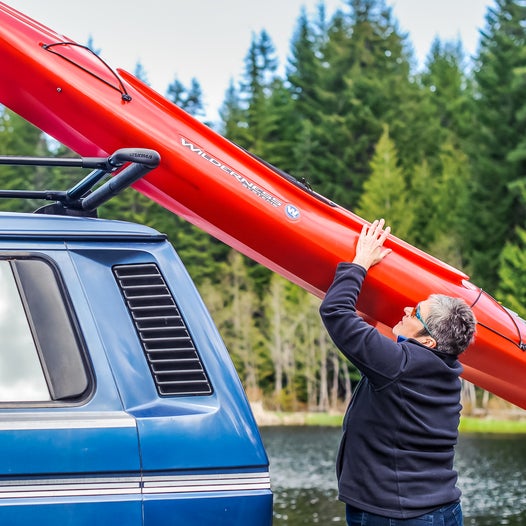Last summer, when ’s Garret Barnum invited members of the to test some of the company’s sport-rack concept products, he didn’t know that a bunch of little old ladies would show up. The gray-haired women—one of them a 79-year-old paddler—didn’t want help from Yakima’s Top of Car category director, or anyone else for that matter, when loading their 50-pound sea kayaks on vehicles.
“Maybe they weren’t as able-bodied as they once were, but they’re still strong,” says Barnum, a five-year veteran of the iconic Lake Oswego rack company. “They don’t want to lose their independence or ask for a second person’s help.”
This maturing, still athletic population, says Barnum, “is a big driver for us in terms of development.” Yakima isn’t alone in such thinking. A significant number of gear companies today are committed, in terms of both marketing and design, to older athletes. “Our product is built around an aging population,” says Evan Wert, president of , which makes high-traction athletic footwear, much of it armed with steel-studded soles. “People who are younger don’t think so much about falling down on the ice.”
Such falls, however, hurt at any age. Which is one reason why the following roundup of products has plenty of appeal for a wide variety of buyers. “If what we develop helps me load a rack easier, I want to use the product,” says Yakima’s Barnum. “Doesn’t matter that I’m under 40.”
Yakima ShowDown Boat and Paddleboard Roof Rack ($449)
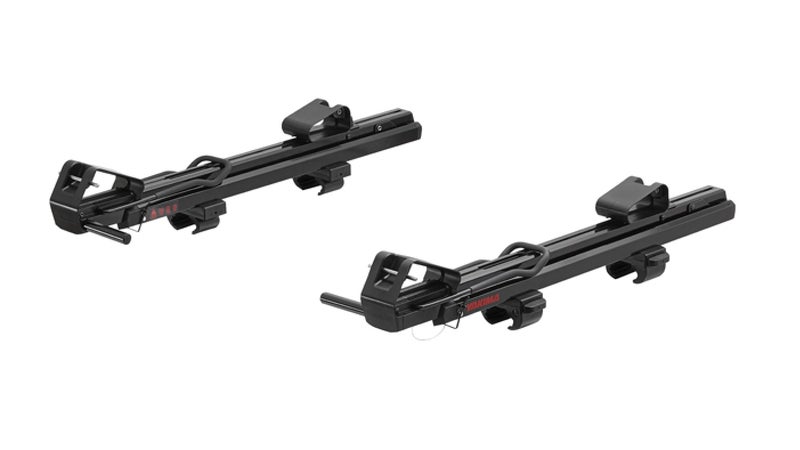
The retirees who helped to create , which can carry either one large sea kayak or two standup paddleboards, loved it for a central reason: no weightlifting-style, clean-and-jerk move needed to put a boat atop the vehicle.Â
Instead, testers only had to lift their boats about waist-high. The low-profile rack may live on the roof, but its support arms telescope out before extending over two feet down alongside a car or utility vehicle. Easily cradle and strap down the boat or board, raise it to roof level via a stable pivoting motion, and slide everything into place over the car. “If you get back to shore earlier than your friends,” says Barnum, “you don’t have to wait around for someone to help you load up.”
Wahoo Elemnt Cycling Computer ($330)
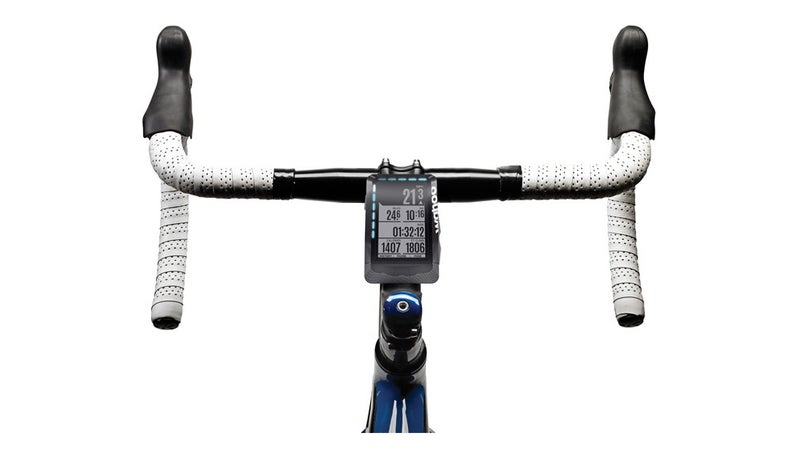
provides a treat for riders’ aging eyes: readability. The 2.7-inch screen is generous, but what’s critical is a zoom feature—easily used while riding—that lets you fill the Elemnt’s window with as few as two key, largely displayed data points. No more squinting to see your speed or cadence. “I’m 48 now and my eyes have been failing me for a while,” says Wahoo CEO Chip Hawkins, who insisted that visibility was a priority in the Elemnt’s design. “You can’t wear reading glasses while you’re riding.”
One more associated—and sweet—feature: programmable, easily spotted LEDs on the Elemnt’s face provide quick reference to key metrics like heart-rate and power output.
Mystery Ranch Stein 62 Backpack ($299)
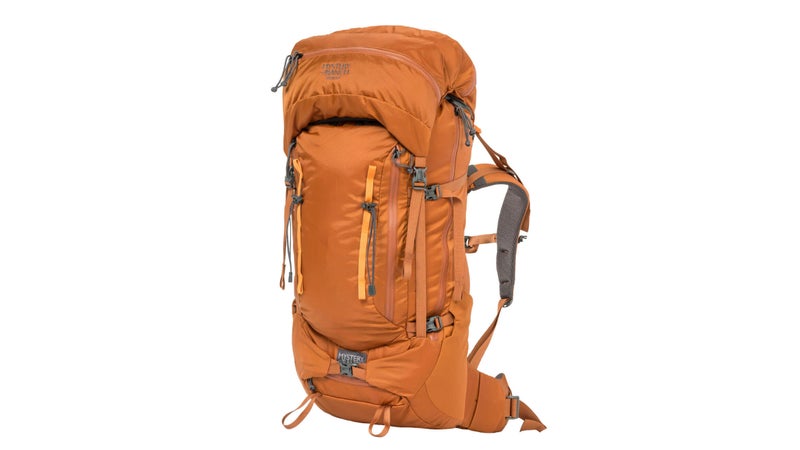
Because makes lots of backpacks for wilderness firefighters and the military, the company knows what old backs need. “We have wearers carrying 100-pound loads for six out of seven days, for 18- or 20-hour stretches, over maybe a six-week period,” says co-owner Dana Gleason. “You’re in the military doing that for a decade and you’ll come out with the orthopedics of a 50-year-old.” The : arthritis, states the CDC, is more prevalent among veterans than non-veterans.
Central to Gleason’s packs—like —keeping special ops soldiers, and aging, mortal backpackers, happy: a stiffened, patented hip belt that moves some with a backpacker, but refuses to fall out of position. The support prevents neck vertebrae from practically fusing under excessive shoulder-strap load, and legs from tingling because of an over-cinched belt. “In other words, the belt won’t slip down to your widest position, which is your ass,” says Gleason. “Keep a backpack comfortably on your waist, and the chronic issues that come up for older athletes are relieved.”
Therm-A-Rest UltraLite Cot ($220)
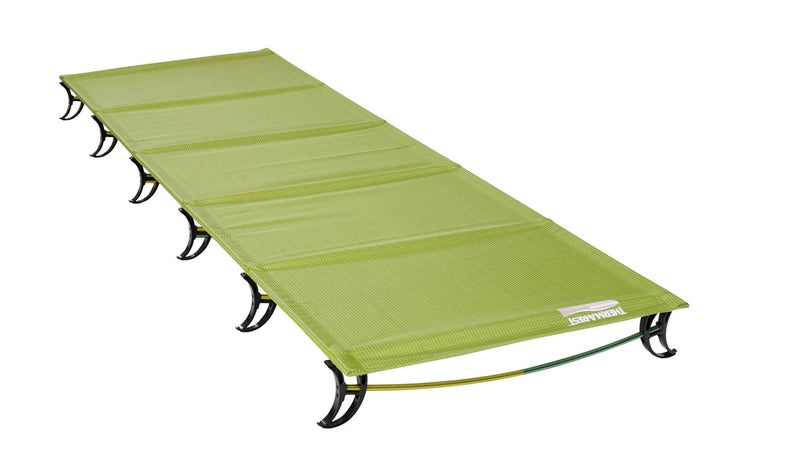
When a Therm-A-Rest designer and dad with a bad back developed the (two pounds) so that he could keep up with his Boy Scout son, there was some internal debate at the company. A backcountry cot? Therm-A-Rest was known for minimalist sleeping pads, not for what seemed at the time an unnecessary luxury. Â
Then “people used it and slept on it,” says Erik Flink, Therm-A-Rest’s brand director. Flink’s co-workers were convinced of the cot for multiple reasons, including its ability to circulate air around a sleeping camper on warm nights, and to provide an inviting platform for a campsite built atop rocky terrain.Â
In terms of customer demographics, there was also no-brainer logic to the idea of a great cot: aging backpackers still want to venture into the backcountry, and to get a good night’s rest. “There are more Baby Boomers getting outside,” says Flink. “They’re pushing to bring the comforts of home to the outdoors.”
Icebug Metro BuGrip ($190)
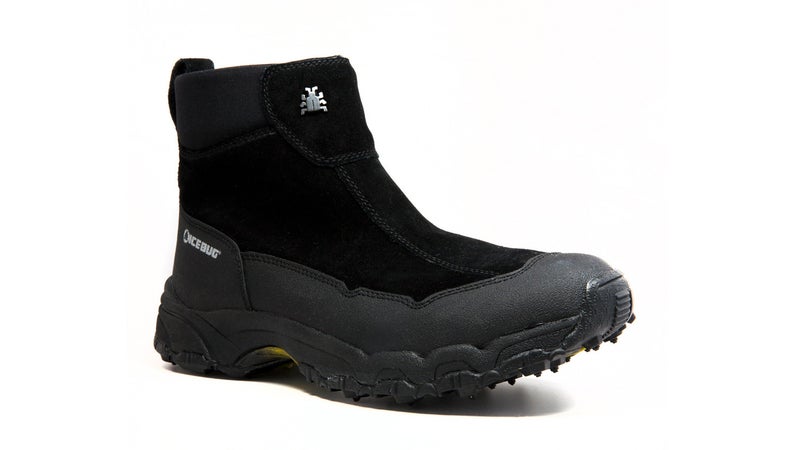
When Eliza Törnkvist and her son David Ekelund stepped out onto Swedish ice in their prototype studded shoes about 20 years ago, they were of two mindsets. The son thought about performance. The shoes could become footwear’s version of snow tires for a Porsche Cayenne. The mom thought: I’ll never slip and fall in these things.
Mom prevailed. While Icebug makes some impressive, sticky (and in some cases studded) running shoes, the Swedish company is best known for its high-traction women’s wear. Each woman’s boot, for instance, features 16 steel, carbide-tipped studs. The Metro is built on a running-shoe last for a sporty feel, but that’s mostly so Icebug customers can chase down an off-leash Lapphund.Â
“Icebugs aren’t built for an elderly population,” says Icebug U.S. president Wert. “They’re for people who want to get out. You know—walk the dog, get some fresh air. No matter what the conditions.”
Oakley Sport-Specific Progressive Technology Glasses (From About $600)
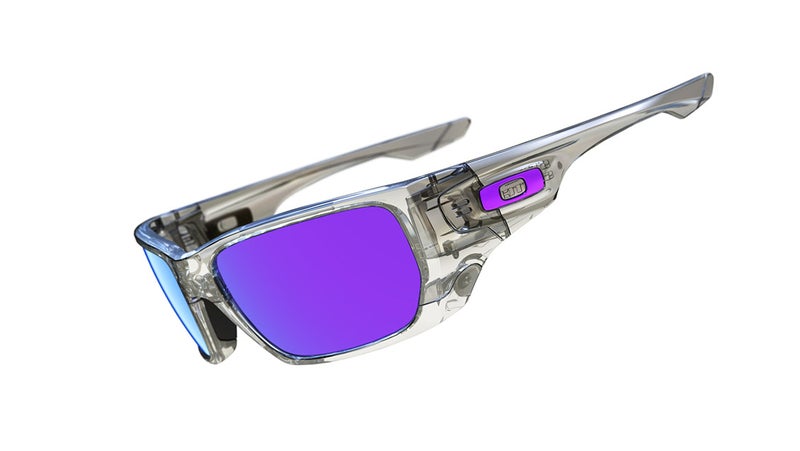
With its , Oakley makes genuine efforts to keep the increasingly visually challenged (that would be a lot of us, as of about 40 and beyond) in the game. The company grinds multifocal prescription lenses specifically for the needs of far-sighted golfers, cyclists, and fishermen. “We needed to ensure the progressive is in the right spot for the athlete’s sport,” explained Wayne Chumbley, Oakley Vision Performance Lab director, via email. “Each sport has different demands.”
Multiple areas of Oakley sport-specific progressive lenses are tasked with different objectives. The bottom of the fishing-specific lenses, for example, offer a wide zone to make close-up work, like baiting, easier. The bottom of the cycling-specific lenses, meanwhile, deliver some midrange and peripheral clarity to riders, so they can better make out road conditions and the cyclists around them. The top of the specific golf lens, meanwhile, allows athletes both to follow a flying ball and to see a flag in the distance. Oakley even took sport-by-sport head positioning into account. Add the company’s current and effective for improved lens contrast, and you won’t miss a thing.


